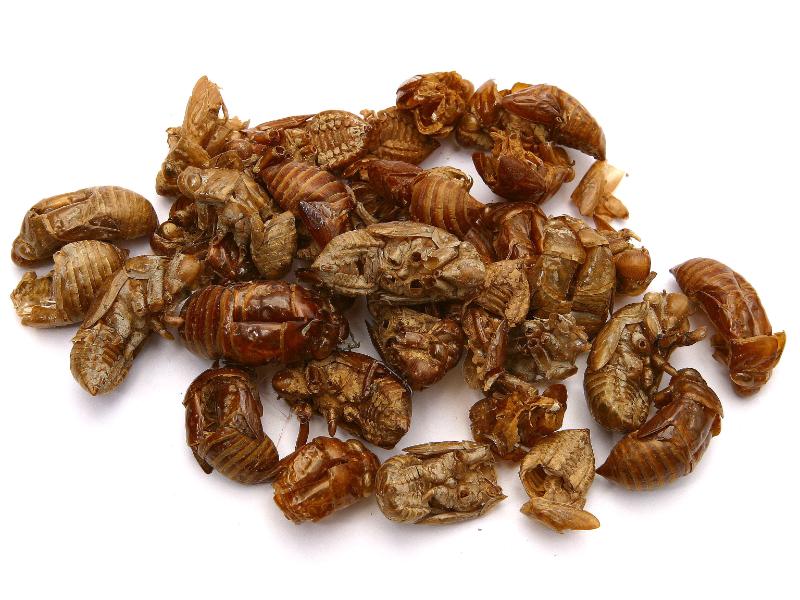Search in medicinals
Cicadae Periostracum
Cicada molting
蝉蜕 〔蟬蛻〕 chán tuì

Alternate Chinese names: 蜩甲 tiáo jiǎ; 唧唧猴皮 jī jī hóu pí; 唧唧皮 jī jī pí; 金牛儿 jīn niú ér; 枯蝉 kū chán; 蝉衣 chán yī; 蝉退 chán tuì
Kingdom: Animal
Origin in PRC Pharmacopoeia: Cryptotympana pustulata Fabricius. (PRC Pharmacopoeia)
Origin in unofficial sources: Cryptotympana pustulata Fabricius; Cryptotympana atrata Fabricius
Use: Medicinal
Category: Exterior-resolving agents / Cool acrid exterior-resolving agents
Properties: Sweet; cold.
Channel entry: Lung and liver channels.
Actions and indications:
- Disperses wind-heat: External contraction of wind-heat; initial-stage warm disease with heat effusion and headache.
- Outthrusts papules and relieves itching: Inhibited eruption of measles papules; itching in rubella (wind papules) or in wind-heat patterns.
- Clears the liver and brightens the eyes: Red eyes, eye screens, and profuse tearing, due to liver channel wind-heat.
- Extinguishes wind and checks tetany: Acute and chronic child fright wind; lockjaw.
- Additional actions: Chán tuì is also used for night crying in infants.
Dosage and method: Oral: 3–10g. Used in decoctions, powders, and pills. Large doses are needed to check tetany.
Warnings: Use with care in pregnancy.
Quality: Best are light undamaged moltings that are yellowish brown in color and clean of earth.
Production area: Shāndōng, Hénán, Héběi, Húběi, Jiāngsū, and Sìchuān, with Shāndōng producing the most.
Back to search result Previous Next